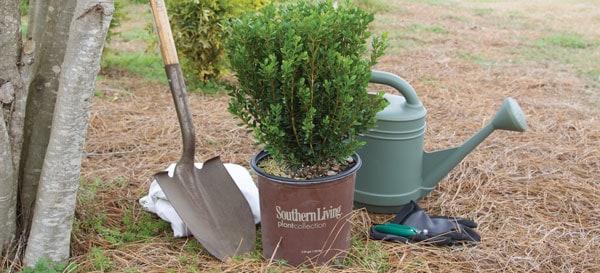Boxwood is a versatile plant that adds structure and color to any garden. Whether you prefer a formal or rustic look, these care tips will ensure your boxwood stays healthy and vibrant. With the right location, drainage, root protection, pruning techniques, winter care, watering, and fertilization, you’ll be able to enjoy your boxwood’s beauty all year round.
Plant Your Boxwood in the Right Location
To maintain healthy plants, it is crucial to choose the right location for your boxwood. Consider the conditions in your garden throughout the year. Does it get hot and dry in the summer? Are the winters windy or calm? Boxwood thrives in full sun to part shade conditions. In hot climates, it benefits from some afternoon shade. Remember that boxwood can be damaged by dry winter winds, so find a protected spot to plant them.
Provide Adequate Drainage
Boxwood plants can tolerate various soils, whether acidic or alkaline, rich or infertile. However, good drainage is essential for their health. Boxwood does not tolerate wet feet! Improve drainage by adding organic matter to the soil or planting on a berm. Avoid planting in wet areas, such as near downspouts or low-lying portions of your garden. If you’re growing boxwood in containers, make sure the containers have excellent drainage to prevent root diseases.
Protect Boxwood Roots
Boxwood plants have shallow root systems that can easily dry out. To maintain a healthy root system, plant your boxwood at the right depth. The root ball should sit just 1/8 inch above the soil surface. This will allow the plants to settle properly without becoming too deep.
To keep the roots cool and conserve soil moisture, apply a two- to three-inch layer of mulch. Extend the mulch at least one foot beyond the canopy of the plant. In the fall and spring, remove any fallen leaves to control disease and replenish the mulch as needed.
Prune Boxwood by Thinning
Instead of using shears, thinning is the recommended way to prune boxwood varieties like Baby Gem™. These new selections offer compact growth and dense branching without the need for heavy shearing. Thinning allows for better light penetration, reduces disease risk, and improves airflow. When pruning, pay attention to damaged plant material and remove broken, dying, or diseased branches promptly. Also, remove any foliage or debris that has collected among the branches.
Winter Protection for Boxwood
Winter winds can cause boxwood foliage to turn yellow-orange to reddish-brown, known as bronzing. While improved varieties like Baby Gem™ hold color well in winter, some protection can prevent bronzing. If your planting site doesn’t offer natural protection, consider using burlap wraps or windbreaks to shield the foliage from the wind.
Water your plants before freezing temperatures arrive to reduce bronzing. Insulate the roots and conserve soil moisture by maintaining a three-inch layer of mulch throughout the fall and winter.
Water Boxwood Wisely
Proper watering is crucial for boxwood. Overwatering can cause root diseases, while underwatering can lead to stress and make plants more susceptible to pests. Water your boxwood slowly and deeply when necessary.
In the first year after planting, newly planted boxwood will require regular irrigation, especially during hot and dry weather. Second-year plants are still developing their root systems and will continue to require water if rainfall is insufficient. Once established, boxwood only need supplemental irrigation during dry conditions.
Fertilize Boxwood as Needed
Every garden has different soil conditions, so it’s essential to conduct a soil test to determine your fertilization needs. Proper fertilization promotes healthy growth and can reduce pest problems. Boxwood respond well to spring applications of nitrogen or a balanced fertilizer if phosphorous and potassium levels are deficient.
Remember that boxwood has wide, shallow root systems that can be damaged by over-fertilization. Apply fertilizer throughout the root zone, extending beyond the plant’s crown. Avoid direct contact between the fertilizer and foliage, trunks, or roots.
In Conclusion
By following these care tips, you can ensure that your boxwood plants remain healthy and beautiful throughout the year. From choosing the right location, providing adequate drainage, protecting the roots, and using proper pruning techniques, to winter care, wise watering, and appropriate fertilization, your boxwood will thrive in your garden. So, start taking care of your boxwood today and enjoy its timeless beauty for years to come!
p.s. Don’t forget to pin this article for later!









